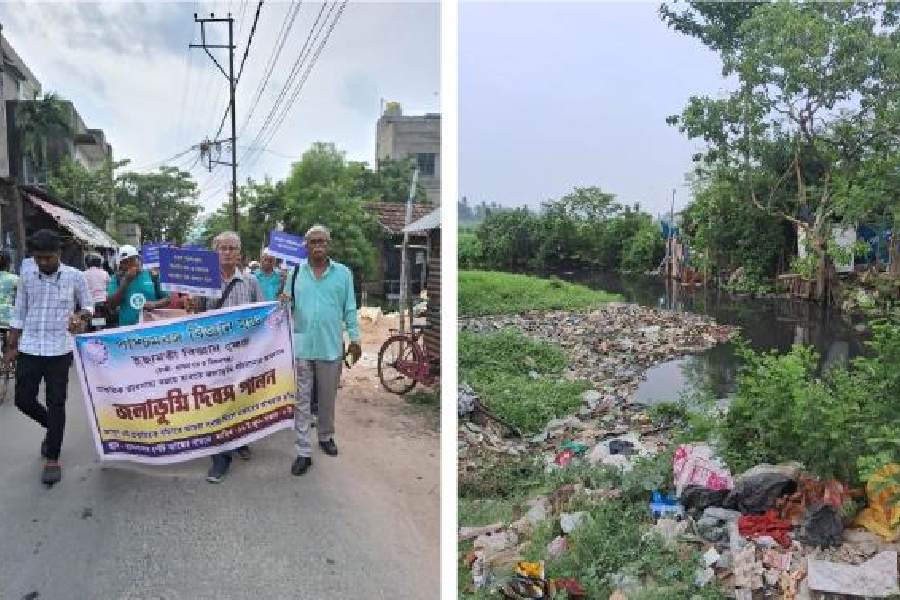More than 30 members of Paschim Banga Vigyan Mancha walked from VIP Sweets, near Chingrihata crossing, to Sukantanagar. They held placards with messages and tried to sensitise people living in the neighbourhood about the importance of preserving East Kolkata Wetlands. They also distributed leaflets among locals to spread awareness about it.
June 16 was World Environment Day and participating in the walk were several people who had come from different districts.
Environmental activist Tapan Saha said: “The East Kolkata Wetlands have always faced threats from various quarters. Right from the time the area was declared a Ramsar site, environmentalists have been trying to protect the region. But we cannot do anything without local support. If people living in and around this area do not care about the welfare of the wetlands, we will never be able to protect them.”
As the participants congregated near Trinath Pally Unnayan Kalyan Samiti in Ward 36 of Bidhannagar Municipal Corporation, the locals started gathering around them. At first, they seemed uninterested but soon engaged with the activists. Siraj Mohammed, a local fisherman, said: “I am not being able to catch as many fish as I did even five years back. The variety of fish in the wetlands has depleted over the years. Now, I have to look for another source of income.”
District chairman of Vigyan Mancha Pulak Chatterjee said: “The area in and around the wetlands is very vulnerable. There is Basanti Highway which has been built through the heart of the wetlands. Then there are engineering colleges and various other factories that have been set up in the area. This has resulted in a threat to the environment.”
Most people live in makeshift homes along the coastline of the wetlands. Garbage is not collected at regular intervals and is disposed, they admitted, in the wetlands itself. There are no dustbins on the streets. Local markets also throw all their waste into the water.
The wetlands have good bacteria, which is a natural treatment for sewage water flowing into the Bidyadhari and through it into the wetlands and other adjoining water bodies in and around the city. However, real estate sharks have been on the prowl for a long time in the area and more and more wetlands are being filled up. “We have to understand that we need the wetlands. We cannot just litter it like we have been doing for so long. Years of hard work will go down the drain if this is not taken care of,” he added.
Vice-president Shyamal Chakraborty, a Rajabazar Science College teacher, said: “According to the World Meteorological Society, by 2050, heatwaves in Kolkata will extend to 188 days out of 365 days in a year. And this will only get worse. The fact that we have so little rainfall and so little green cover in and around the city is a great concern. The wetlands absorb a huge amount of carbon dioxide which reduces warm air around us. We need to protect this at any cost.”
